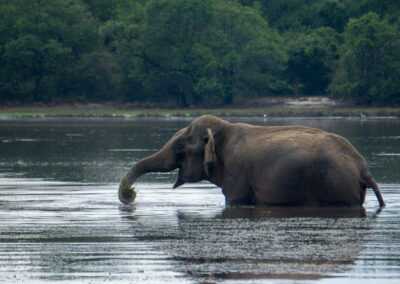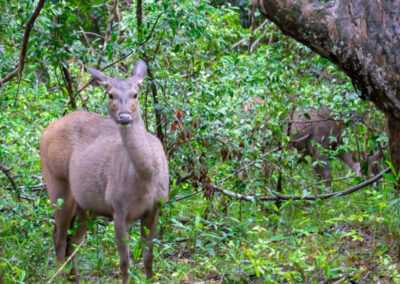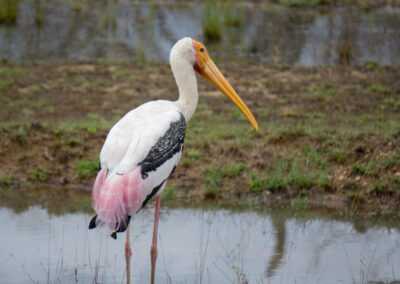About
Wilpattu National Park is the largest national park in Sri Lanka. The park is famous as a safari destination to see Leopards in the wild and is renowned as the area in Sri Lanka with the highest population of Sri Lankan Leopards. The park is also famous for a collection of 100-odd small, shallow lake bodies called ‘Villus’ dispersed throughout the park area.
Location
Wilpattu National Park is located across the North Western and North Central Provinces of Sri Lanka. The main park entrance is 40 KM away from Anuradhapura city (50 min drive), 100 KM away (by land) from Kalpitiya city (2 hr drive), 105 KM away from Chilaw city (2 hr 13 min drive), 140 KM away from Mannar city (2 hr 45 min drive), 150 KM away from Negombo city (3 hr 30 min drive) and 205 KM away from Colombo city (4 hr 30 min drive).
Reaching Wilpattu National Park
The Hunuwilagama park gate (the main entrance) is reached by taking the Puttalam-Anuradhapura A12 highway. The main gate is located 8 KM from a turn off located nearby the 28th KM post along the road in the Thimbiriwewa suburb. The park can be reached via public transport but is best reached via privately arranged transport.
Best time to visit Wilpattu National Park
The park is frequented by visitors during the period from February to October, although the park remains an year-round destination for avid wildlife enthusiasts.
Physical Features
Wilpattu National Park is the largest wildlife sanctuary and national park in Sri Lanka, spanning well over 130,000 ha. The park is bordered by the sea in the eastern side. The main topographical feature of the park is the concentration of natural tanks (‘Villus’) within it. Around 100 villus punctuate the park area, which are typically shallow lakes filled with rainwater surrounded by open grassy plains amid dense scrublands. The park is in the dry zone of Sri Lanka, experiencing an annual rainfall of around 1,000 millimetres. The primarily experiences rainfall during the second inter-monsoon from October to November. It also received some rainfall during the first inter-monsoon from March to April. The park experiences an extensive drought during the period set between the two inter-monsoons.
Flora at Wilpattu National Park
The park has 3 distinct types of vegetation due to its varied topography. Littoral vegetation such as salt grass and low scrub can be found in the area immediately adjacent to the beach in its eastern border. The park has a 5 -10 km coastal belt of monsoon scrub of low stature and further inland lies monsoon forests with tall emergents such as Palu (Manilkara hexandra) and Satin (Chloroxylon swietenia), Milla (Vitex altissima), Weera (Drypetes sepiaria), Ebony (Disopyros ebenum) and Wewarna (Alseodaphne semecapriflolia). Close to 75% of the park is covered in dense forest or scrubland and only the remaining 25% of area remains accessible for visitors.
Fauna at Wilpattu National Park
The park is home to 31 species of mammals, including the Sri Lankan elephant (Elephas maximus), sloth bear (Melursus ursinus), leopard (Panthera pardus kotiya) and water Buffalo (Bubalus bubalis).
Other residents of the park include reptiles, such as rat snakes, Indian python, common cobra, mugger crocodile, pond turtle and soft-shelled turtle, can be spotted here also, as well as various species of birds, including garganey (Anas querquedula), pintail (Anas acuta), whistling teal (Dendrocygna javanica), spoonbill (Platalea leucorodia), white ibis (Threskiornis malanocephalus), large white egret (Egretta alba modesta), cattle egret (Bubulcus ibis) and purple heron (Ardea purpurea).
[All image copyrights reserved by original authors]



